
भारतीय उष्णदेशीय मौसम विज्ञान संस्थान
Indian Institute of Tropical Meteorology
पृथ्वी विज्ञान मंत्रालय, भारत सरकार का एक स्वायत्त संस्थान
An Autonomous Institute of the Ministry of Earth Sciences, Govt. of India
Cloud Aerosol Interaction and Precipitation Enhancement (CAIPEEX)
Objectives
A. Conduct collocated airborne and integrated ground based observations at different places and seasons to understand
a) The cloud and precipitation microphysical changes in the clouds in response to changes in aerosol particles
b) Cloud microphysical and dynamical controls on the rain formation and their linkages and controlling factors for cloud growth to formulate guidelines for cloud seeding
c) How physical and chemical properties of aerosols may impact radiative forcing and cloud formation
d) To establish the link between the boundary layer CCN and the cloud base CCNwith the help of aerosol-CCN-droplet closure studies
e) For the exchange of mass momentum and heat within the boundary layer and the cloud layer
f) How direct and indirect effect of aerosols may be quantified, and make observations of black carbon aerosols and investigate their role in cloud burning/cloud forming and eventually on the radiation balance
g) Understand formation and dissipation of fog and its life cycle to improve fog parameterization in models
h) Utilization of observations in formulating physical parameterization for monsoon clouds.
B.Conduct radar monitoring of cloud microphysical characteristics (Ka band) and precipitation (C-band) over the seeded areas
a) to document the cloud and precipitation microphysical and dynamical evolution of seeded cloudsand mesoscale convective clusters
b) toevaluate amenability and to derive statistical confidence in the seeding procedure.
C.Conduct laboratory and numerical simulations to understand the fundamental cloud dynamical and microphysical processes
a) To establish a fluid dynamics laboratory to study laboratory analogues of boundary layer and cloud flows
b) To establish a cloud seeding flare material testing aerosol and cloud physics laboratory
D.Undertake initiatives to investigate the cloud physics and dynamics in the subgrid scales through turbulence simulations to scale up and scale down the information by using combined observations and numerical simulations in the DNS-LES-RANS framework.
About Us
The controls on the cloud formation, organization, decay in the monsoon convection is a multi-scale problem and needs multi-faceted approach from the satellite, ground based, in situ airborne observational efforts and laboratory and numerical studiesto understand themultiscale physics and dynamics of clouds. Cloud Aerosol Interaction and Precipitation Enhancement Experiment (CAIPEEX), program addresses these aspects from in situ airborne and collocated ground based observations. Further insight on the aerosol-cloud interaction is brought out from explicit simulation of clouds numerically and in the laboratory.
CAIPEEX as an Indian national campaign is designedspecifically to make progress in the aerosol and cloud microphysics observations over Indian region and to propose guidelines for cloud seeding.CAIPEEX focus on the aerosol-cloud-precipitation interactions in the premonsoon and monsoon environment and to derive useful guidelines for cloud seeding purpose.
Aerosol-Cloud-Precipitation interactions and their linkages with dynamics is a key topic that require attention in the weather and climate systems. Rainfall changes and impact of climate change due to anthropogenic emissions are closely related, however linkages are nonlinear. Although a wide variety of ground based and satellite datasets are available, in situ observations of aerosol and cloud and rain are required to investigate the aerosol-cloud interaction. These observations could be instrumental to improve representation of cloud processes in weather and climate models for the understanding of weather modification and its effective implementation.
The program address the impact of aerosols on the hydrological cycle by coordinated integrated observations of aerosol, cloud micro scale and macro scale characteristics, thermodynamic state of the atmosphere and numerical simulations. CAIPEEX has started in 2009 and have finished three phases and overall, 820 hours of airborne observations were collected.The observations in 2009 (Phase I) mainly focussed on the aerosol, cloud microphysical observations at different parts of India. The main focus was to document continental clouds and their microphysical properties in different locations.
CAIPEEX Scientific Steering Committee
|
Name of Member |
Member |
|
Prof. G. S. Bhat |
Chairman |
|
DG IMD/Representative |
Member |
|
Prof. K Krishnamoorthy |
Member |
|
Prof. M. M Sarin |
Member |
|
Prof. P Pradeepkumar |
Member |
|
Dr. J. R. Kulkarni |
Member |
|
Capt. Rajiv. K. Mehajan |
Member |
|
Dr. Mudkavi |
Member |
|
Dr. A. K. Sahai |
Member |
|
Dr. P George |
Member |
|
Dr. Thara Prabhakaran |
Convener |
Project Details
The program has collected background data over the rainshadow region and at several places in India for the first time. CAIPEEX Aircraft observations over the Western Ghat revealed that forced updrafts foster rapid condensational growth of cloud droplets, triggering coalescence process within few hundred meters of cloud depth. The low updrafts provided sufficient time required for warm rain processes to produce rainfall from shallow clouds. Suppression of rainfall over the rainfall over the rain shadow region is due to dynamical forcing and prevalence of congestus clouds with high cloud bases, which suppress warm rain process. Dry air intrusions with aerosol laden air and multilevel inversions also contributed to the suppressed rainfall. Elevated layers of aerosols (above 3 km) were observed at several places, attributed to sources from local anthropogenic activities and biomass burning, dust from local and long-range transport.. Droplet size distributions in highly polluted premonsoon clouds are substantially narrower due to their small sizes than that of less polluted monsoon clouds. The bimodal droplet spectra in monsoon clouds were attributed to incloud activation of new droplets and evaporation of large droplets. Maximum cloud liquid water was found at the tops of polluted clouds and raindrops formed in undiluted cores of such clouds at greater heights from the cloud base.
Observations of cloud condensation nuclei and ice nuclei particles that form cloud liquid drops and ice crystals were made for the first time. CAIPEEX has documented mixed phase nature and ice particle habits in the monsoon and premonsoon clouds for the first time. The fundamental process of rainfall mechanism in the monsoon clouds were revealed. The height of first raindrop formation in monsoon clouds depends linearly on the droplet number concentration at cloud base. First rain formation is determined largely by the basic condensation and collision mechanisms in ascending adiabatic cloud volumes. The raindrops form in the convective cores of the clouds as well as in the ascending cells around the convective cores.
Horizontal flights across the Himalayan slopes revealed the mechanism that favors transport across the valley to Tibetan Plateau. Simulations together with observations showed that even natural dust emissions (without changes in anthropogenic emissions) may also influence the spatial and temporal distribution of cloud and precipitation. Combining the CAIPEEX observations of aerosol and BC with numerical models, enhanced radiative heating in the elevated layers were noted. BC stimulated heating reduced cloud fraction contributed to “cloud burning effect” and estimated instantaneous BC induced radiative forcing in the cloud regime was +12.7 to + 45.1Wm-2 during the experimental period.
Several microphysical process parameterization were proposed from CAIPEEX observations, eg. for cloud droplet effective radius, ice nucleation, ice water content, etc. Ice nuclei observations correspond to several vertical levels including the cloud layer and over several geographically distinct locations in India. It was also showed that the aerosol indirect effect may be offset by the dispersion effect up to 39 % and this will have implications to climate/weather model results where dispersion effect is not incorporated.
First time vertical variation of Ice nuclei (IN) over the Indian region is illustrated from CAIPEEX observations. Spatial variation in IN concentration was observed in the range 0 to 5 L− 1 with an average of 1.12 L− 1 at highest ice super saturation (20–25%) interval. These concentrations are much less compared to the ones prescribed in numerical models. Elemental chemical analysis of the collected aerosol samples onboard the aircraft at higher elevations showed that copper, silica, aluminium and zinc are the most abundant elements.
The instantaneous vertical heating rate induced by BC in cloud layers is found to be as high as 2.65 K/day and is found to be inducing a reduction in the cloud liquid water content (LWC). The large-scale Walker and Hadley atmospheric circulations associated with the Indian summer monsoon may help lofting of BC aerosols to the upper atmosphere (4–6 km).
Natural dust also may play as an important role in the direct and indirect effect by acting as an absorbing aerosol or as cloud condensation or ice nuclei which help formation of clouds. The elevated layers of aerosol with dust and fine mode aerosol particles were observed during CAIPEEX 2009 over the Ganges valley area. CAIPEEX 2009 observations over Pune showed a consistent elevated aerosol layer in spite of increase in rainfall events, the aerosol optical depth was increasing as rainfall increased. It is hypothesized that the existence of such elevated layers might have an impact on the atmospheric heating and may intern influence the cloud systems developing further south of the region, ie., before the onset of monsoon. An increase in rainfall and cloud ice water content was noted as more dust emission was imposed from Thar Desert.
CAIPEEX Aircraft observations over the WG revealed that forced updrafts foster rapid condensational growth of cloud droplets, triggering coalescence process within few hundred meters of cloud depth.
There have been several research papers in refereed journals and data that was collected during the campaign continue to contribute to the growing knowledge on clouds and precipitation. These observations are used at process level understanding and for the development of process parameterization in numerical models. The CAIPEEX program has also taken initiatives in establishing a Fluid Dynamics Laboratory, where cloud flows and boundary layers will be studied in the laboratory setup. There is also a cloud simulation initiative under the with Large Eddy Simulation and Direct Numerical Simulation to derive turbulence characteristics of clouds and boundary layers.
CAIPEEX is continuing to study precipitation formation process over rainshadow region and subsequently to collect more raindomized seeding samples to develop protocols for cloud seeding. Randomized seeding hypothesis is adopted to address the second objective to formulate a scientific basis for rain formation and rain enhancement. A hired C-band radar was utilized in 2011 and 22 randomized samples in convective clouds are collected.
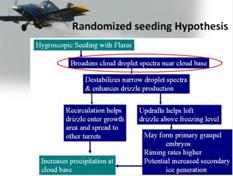
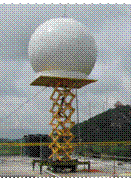
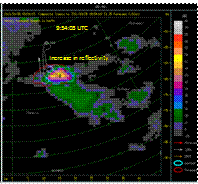
The illustration of seeding criterion and the C-band radar and TITAN used for storm tracking. A sample of radar reflectivity and aircraft tracks during the seeding, cloud and raindrops observed at the cloud base with the cloud and precipitation imaging probes. However, due to the mixed phase nature of clouds, a dual polarimeteric C-band radar will be used in the upcoming experiment.
Upcoming campaign (2017-19) Cloud seeding experiment
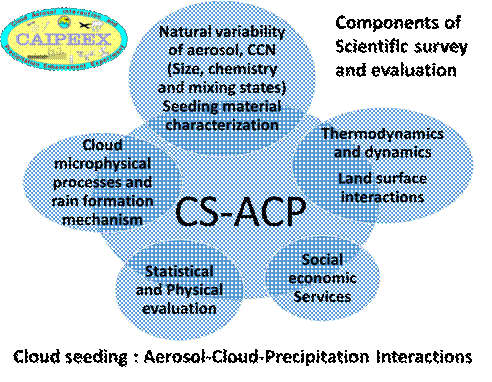
Developmental Activities:
- With the completion of Phase III 2015, CAIPEEX project has resulted in 820 hours of airborne observations over Indian region and is a major achievement.
- CAIPEEX Integrated Ground Observational Campaign (IGOC-2014) in Mirzapur, BHU was completed
- The micro-meteorological tower installed at the BHU site is maintained as a flux tower for long term observations for rainfed agriculture.
- FDL: Fluid dynamics lab is under development (see for more details ).
- Initiatives are undertaken for deployment of CAIPEEX instrumentation for the Winter Fog Campaign at New Delhi Airport
Important Results:
-
Aerosol impact rain drop formation in monsoon clouds
The height of this critical effective radius when the collision coalescence becomes very effective (12-14 µm) depends linearly on the aerosol concentration at the cloud base. Increase in warm rain depth with aerosol number concentration in several cloud observations during CAIPEEX (Konwar et al., 2012 JGR).
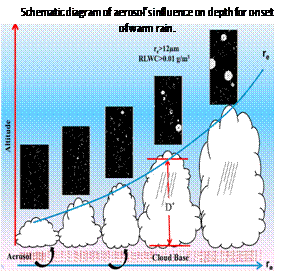
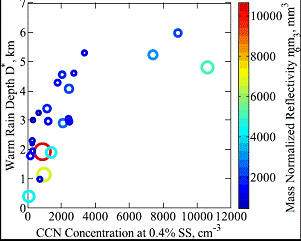
Figure:Vertical variation of effective radius indicates warm rain initiated at lower heights over the Bay of Bengal compared to moderately polluted peninsular land region and very highly polluted Indo Gangetic Plains (IGP), Higher CCN increases the warm rain depth (Konwar et al., 2012 JGR)
-
Aerosol-cloud interaction in monsoon and premonsoon environments
The premonsoon cloud has typically an elevated cloud base and large aerosol number concentration and as a result, numerous cloud droplets (exceeding 500 cm-3) are observed and the raindrops are formed at higher altitude. The raindrops are formed at a lower elevation in the case of a monsoon cloud due to low aerosol number concentrations and large droplets and occurrence of collision coalescence. The scenario with the monsoon cloud is closer to that of a marine cloud with ample subcloud moisture content and low aerosol number concentration. In the case when warm rain processes are suppressed, droplet spectrum is narrow and does not facilitate collision coalescence in the lower levels. In monsoon clouds sometimes bimodal droplet size distribution was observed.
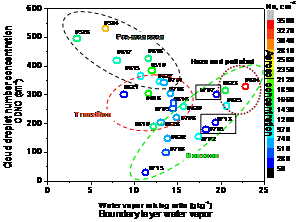
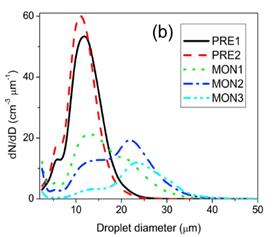
Aerosol cloud interaction in the monsoon environment derived from CAIPEEX (Prabha et al., 2012a JGR)
-
Parameterizing ice water content in monsoon clouds
First time ice water content, ice number concentrations, particle size distributions from monsoon clouds and useful parameterization for deriving such parameters in numerical models, radars etc. are established from CAIPEEX airborne observations (Patade et al., 2015 JGR)
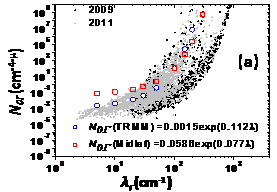
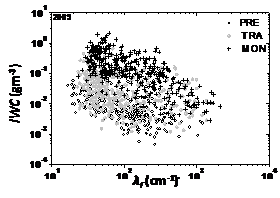
Figure: Ice number concentration and ice water content parameterization in premonsoon (PRE), transition to monsoon (TRA) and monsoon (MON) clouds derived from aircraft observations.
-
Relating the cloud base and ground base CCN
For the first time, relationship between the surface CCN and the cloud base CCN, activation characteristics are established (Varghese et al., AE 2015)
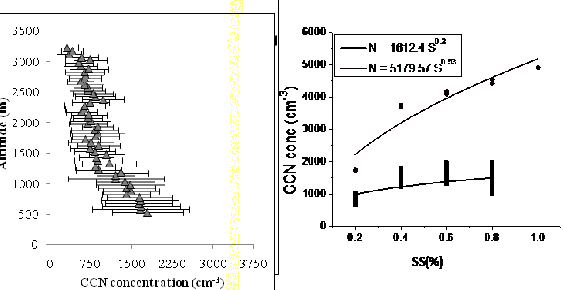
Figure: Vertical profile of CCN number concentration during the clean, highly polluted and polluted condition. CCN spectra near the surface and at the cloud base
Project Highlight
On the k-1 law in sink-flow turbulent boundary layers
New addition in the current understanding of turbulent boundary layer flows on the issue of the illusive nature of the so-called k-1 scaling in the spectrum of streamwise velocity fluctuationis presented. Theoretically and experimentally it is shown that the k-1 scaling may be expected to emerge at much lower Reynolds numbers in the presence of favourable pressure gradients than in the corresponding zero-pressure gradient turbulent boundary layer flows.[On the k−1 scaling in sink-flow turbulent boundary layers, S. A. Dixit & O. N. Ramesh, J. Fluid Mech., 737, 329-348]
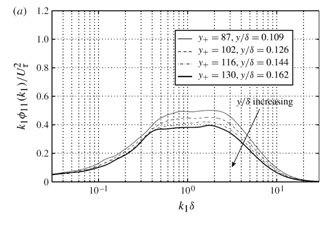
Figure: Premultiplied streamwise velocity spectra (using wavelets) for the present sink flow TBL (a) for outer scaling and (b) for inner scaling
Campaigns/Laboratories
CAIPEEX Airborne observations
Phase I , Phase II, Phase III, Phase IV
CAIPEEX Phase III Ganga Basin aircraft observations: started on 9th September from Lucknow. The aircraft moved to Varanasi on 13th September. Research operations were carried out from Varanasi to investigate the cloud processes under high pollution conditions. 49 hours of airborne observations were conducted until the withdrawal of monsoon. The Phase III observations included various aerosol and cloud chemistry observations together with the cloud microphysics onboard the aircraft. Observations were conducted for clouds growing under hazy environments in the valley towards and away from the Himalayan slopes.
IITM has conducted CAIPEEX airborne observations of clouds and aerosols over the Cloud Physics Observatory at Mahabaleswar (HACPL) during 28th Oct to 14th Nov 2014. During this period, several research flights (26 hours of observations) with aircraft were carried out from Juhu Airport, Mumbai and over the Mahabaleshwar site with the radars in operation. These observations correspond to the high aerosol episodes after the SW monsoon withdrawal and correspond to the period of NE monsoon activity over the region. These observations will be first of its kind over the Western Ghat region.
CAIPEEX Integrated Ground Observational Campaign I
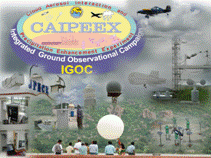
AIM
- To conduct co-located vertical profiling below CAIPEEX flights to augment Phase II second yearaircraft measurements
- Conduct process studies to understand interaction of cloud microphysics, radiation, aerosoldynamics in monsoon clouds that are modulated by thermodynamics, covering the entire diurnalcycle.
- Instrument inter-comparison and calibration of C and S band radars, disdrometer, and AWS/ARG; microwave radiometer, RSRW and aircraft flights.
- To facilitate valuable data, which will become building blocks for several interactiveparameterization studies
CAIPEEX Integrated Ground Observational Campaign II
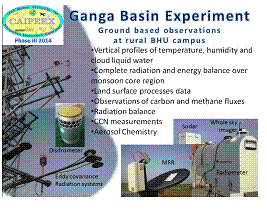
Ground observations were conducted at Barkachha, South Campus of BHU, UP, with anMoU with BHU. 20 m instrumented tower for complete energy and radiation balance and various other instruments such as microwave radiometer profiler for thermodynamic profiles and cloud characteristics, micro rain radar, and disdrometer for rain size distributions were installed at the site. TIFR, Hyderabad team also participated participated in the campaign with a sky radiometer and radiation sensor. Valuable data is being collected at the site since 21 May 2014. Polarization Lidar observations are conducted from Varanasi through a collaboration with NARL, Tirupathi during the period Sept. 3 – Nov. 9, 2014. Cloud condensation nuclei, Black Carbon observations are carried out at the site for 4 month period. Sky radiometer observations are conducted in collaboration with TIFR, Balloon Facility.
Fluid Dynamics Laboratory (FDL)
Lead: Dr.Shivsai Dixit
Objective:
To simulate and study, experimentally as well as numerically, different flows of interest to atmospheric and oceanic sciences in laboratory environment, in order to enhance the fundamental understanding of such flows which, in turn, could be useful towards improvements in model parameterizations for better forecasts of tropical weather and climate, in general and Indian Summer Monsoon, in particular.
- Cloud Flows – Volumetric heating, Entrainment and Multi-Plume Interactions
- Boundary Layers – Scaling and Structures in Rough-Wall-Flows
- Flows Past Obstacles – Orography, Vortex Shedding behind micro-met. towers
- Wall Jets – Scaling, Diffusion, Stability, Structures and effect of Wall Roughness
- Direct Numerical Simulation (DNS) Code – Incompressible Boussinesque Flows
Instruments and setup
- Water tank
- Hotwire Anemometry System
- High- and Low-Speed PIV Systems
- Wall-Jet Setup (air-based)
Aerosol and Cloud Physics flare testing and calibration laboratory
Coordinators: Mrs. Mercy Varghese, Dr.BabanNagare, Mr. P. Murugavel
Hygroscopic seeding has been explored by various states in India as rain enhancement exercise. In hygroscopic seeding, seed cloud condensation nuclei (CCN) are injected into the cloud in order to accelerate the coalescence process among the cloud droplet and the cloud droplet size distribution is skewed to broader size. The CCN for hygroscopic seeding are produced by pyrotechnic flare. To investigate the CCN produced by pyrotechnic flare, a testing facility is under development.
Long term Black carbon observations
Coordinators: Dr. P. D. Safai
BC data for the period of 6 years (2005–2010) was studied and compared with that reported from different Indian locations. The mean BC concentration for the 6 year period was 3.58 ± 1.55 μg/m3 with maximum concentration occurring during winter and minimum during monsoon season in each year. Mean annual mass fraction of BC to TSP was 2.9%. The similarity of diurnal variation as well as significantly good correlation of BC with PM1.0 showed that BC lies mainly in the fine size. Also, a good correlation with other anthropogenically originated chemical components of aerosol like NO3−, NH4+ and nonsea salt fractions of SO42 − and K+ indicated the presence of common source like fossil-fuel/biomass burning.
IITM branch office and Rain chemistry studies
Lead: Dr. Suresh Tiwari
Fog observational campaign 2015
Coordinators: Dr. Sachin Ghude, Dr. D. M. Chate and Dr. Thara Prabhakaran
Different CAIPEEX instruments wereinstalledat IGI Airport and Pusa Campus in New Delhifor the Winter Fog Campaign 2015. The instruments installed at IGI included the microwave radiometer, wind profiler, and tower instruments such as all weather sensors, eddy covariance sensors, net radiometers, soil temperature and moisture sensors, aethalometer, fog collector, Cloud droplet probe with an aspirator, and condensation particle counter. Photo acoustic extinctiometerwas installed at Pusa. Filter samples were also collected for chemical and physical analysis. Tethersonde flights were also conducted. Tethersonde measurements of aerosol, BC, temperature and RH were also carried out in the Fog Layer in collaboration with TIFR Balloon facility.
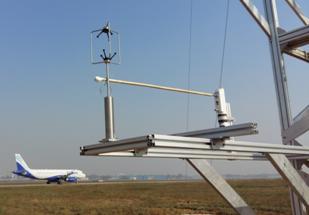
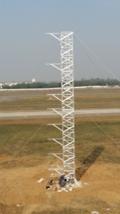
Fig. Tower instrumentation setup for Fog campaign.
Hydrodynamic simulations of clouds using DNS and RANS
Coordinators: Dr.Bipinkumar and Thara Prabhakaran
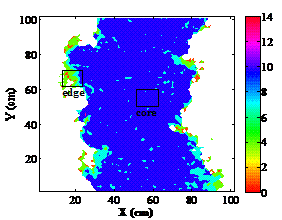
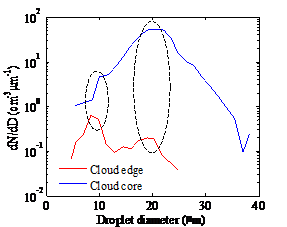
Direct Numerical Simulation of mixing and entrainment in cumulus clouds
– a picture of cloud edge and cloud core mixingand respective droplet size distribution
To carry out cloud hydrodynamic simulations to capture different aspects of the multiscale physics and dynamics of clouds. This involves direct numerical simulations (DNS) which resolve the dynamics in a small domain down to the viscous scale without any parametrization, large-eddy simulations (LES) which can resolve the complex dynamics of a single cloud and cloud resolving models (CRM) that capture large mesoscale convection domains. Such an approach combines up- and down-scaling and will be integrated with CAIPEEX observations.
Recent Publications
- Konwar M., Raut B.A., Jayarao Y., Prabhakaran Thara, Rain microphysical properties over the rain shadow region of India, Atmospheric Research, 275: 106224, September 2022, DOI:10.1016/j.atmosres.2022.106224 (Impact Factor 5.369)
- Dixit S., Gupta A., Choudhary H., Prabhakaran Thara, Universal scaling of mean skin friction in turbulent boundary layers and fully developed pipe and channel flows, Journal of Fluid Mechanics, 943: A43, July 2022, DOI:10.1017/jfm.2022.463, 1-28 (Impact Factor 3.627)
- Murugavel P., Thara Prabhakaran, Pandithurai G., Gopalakrishnan V., Pawar S.D., Physical mechanisms associated with the intense lightning over Indian region, International Journal of Climatology, 42, June 2022, DOI:10.1002/joc.7466, 4300-4315 (Impact Factor 4.069)
- Jayachandran V., Bera S., Bankar S.P., Malap N., Varghese M., Safai P.D., Konwar M. Todekar K.S., Jaya Rao Y., Murugavel P., Prabhakaran Thara, Hygroscopic growth and CCN activation of aerosols during Indian Summer Monsoon over a rain-shadow region, Atmospheric Research, 267: 105976, April 2022, DOI:10.1016/j.atmosres.2021.105976, 1-13 (Impact Factor 5.369)
- Kulkarni G., Sandeep J., Murugavel P., Chowdhuri S., Konwar M., Dinesh G., Todekar K., Bankar S., Dixit S.A., Malap N., Prabhakaran Thara, Evaluation of high-resolution WRF model forecasts and their use for cloud seeding decisions, Journal of Atmospheric and Solar Terrestrial Physics, 228: 105825, February 2022, DOI:10.1016/j.jastp.2022.105825, 1-14 (Impact Factor 1.735)
CAIPEEX Phase I (2009)
Airborne observations of cloud microphysical parameters, aerosol size distribution, cloud condensation nuclei (CCN) concentrations and environmental parameters such as temperature, humidity and winds were carried out with the help of a twin engine Piper Cheyene pressurized aircraft in 2009, which was exploratory experiment for two reasons. This was to survey the aerosol, CCN and cloud droplet characteristics over different parts of India and to identify a suitable location to conduct cloud seeding experiment (Kulkarni et al., 2012 for details).
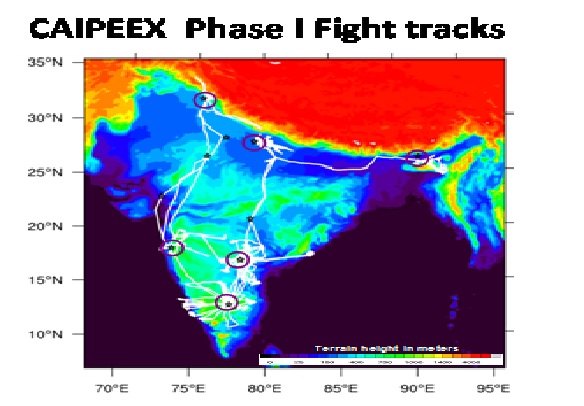
Participants
The list of National steering committee members and participant scientists:
| 1. Dr. D. R. Sikka 40, Mausam Vihar, New Delhi - 110 051 drsikka@yahoo.com |
14. Air Vice Marshal. G. P. Sharma Principal Director, Directorate of Meteorology, Air Head Quarters (Vayu Bhavan) New Delhi 110011 pdmetgps@gmail.com Tel. 23091042 |
| 2. Dr. Ajit Tyagi Director General of Meteorology India Meteorological Department Mausam Bhavan, Lodhi Road, New Delhi 110003 ajit.tyagi@gmail.com |
15. Comm. Mahitosh Mishra Principal Director Directorate of Naval Oenology & Meteorology Integrated Head Quarters, Ministry of Defense, New Delhi - 110 011 Tel : 011-2301 0139 Fax : 011-2301 1663 |
| 3. Dr. B.N Goswami Director Indian Institute of Tropical Meteorology, Dr. Homi Bhabha Road, Pashan, Pune 411 008 91-020-25893924:Office 91-020-25885171 :Residence goswami@tropmet.res.in |
16. Dr. S.N. Tripathi Associate Professor Department of Civil Engineering Indian Institute of Technology Kanpur Kanpur-208016 snt@iitk.ac.in, tripathi_sn@hotmail.com Tel : +91 512 259 7845 (O) +91 512 259 8806 (R) +91 941 5050540 (m) Fax: +91 512 259 7395 |
| 4. Dr. R. R. Kelkar ISRO Chair Professor Department of Atmospheric & Space Sciences, Univeristy of Pune Ganeshkhind, Pune - 411 007 rrkelkar@unipune.ernet.in |
17. Dr. Manchanda Chairman, TIFR Balloon Facility Committee and Balloon Facility Management Board, National centre for environmental sciences and payload engineering, Hyderabad - 500 062 ravi@tifr.res.in Tel. 22 22782403/ 22782618 |
| 5. Dr. Jayaraman Director National Atmospheric Research Laboratory Gadanki - 517 112, Chittoor District Andhra Pradesh, India. jayaraman@narl.gov.in Phone : 8585-272 001 Fax :8585 272018 |
18. Prof. Ram Sagar Director Aryabhatta Research Institute of Observational Sciences (ARIES), Manora Peak, Nainital-263 129 sagar@aries.ernet.in Tel: +91-5942-233734, 233735, 233727, 232655 Fax: +91-5942-233439 |
| 6. Prof. G. S. Bhat Chairman Center for Atmospheric and Oceanic Sciences (CAOS) Indian Institute of Science (IISC) Bangalore - 560 012. bhat@caos.iisc.ernet.in Phone : 080 23600450 , 080-2293 3071 Fax: 091-80-23600865 |
19. Dr. Hatwar ADGM (R) India Meteorological Department, Shivajinagar, Pune - 411 005. Tel. 25535211 |
| 7. Prof. P. V. Joseph UGC visiting Professor, Department of Atmospheric science, Cochin University of Science and Technology, (CUSAT),Fine Arts Avenue, Cochin - 682 016 porathur@md4.vsnl.net.in Tel. 0484 353662 (o) 0484 422108 |
20. Dr. Vashishta DDGM (SI) India Meteorological Department Shivajinagar, Pune - 411 005 ramdhanv@hotmail.com Tel. 25535211 |
| 8. Dr. A. K. Bohra National Centre for Medium Range Weather Forecasting (NCMRWF) A50, Sector 62, Institutional Area, Phase II, Noida - 201 301 UP akbohra@ncmrwf.gov.in Tel. 0120 2403611 Fax 0120 2400062 |
21. Dr C. B. S. Dutt Dy Programme Director, ISRO-GBP & Member-Secretary, JSWG-MT-ISRO Room No. 141, ISRO Headquarters Antariksh Bhavan, New BEL Road Bangalore 560 094 dutt_cbs@isro.org |
| 9. Prof. M.M. Sarin Physical Research Laboratory Navrangpura, Ahmedabad - 380 009, India sarin@prl.res.in Tel:079 26314000, 26302129. Fax: +91 79 2631 4900 |
22. Dr. M.K. Bhatnagar Director, Aviation Services, India Meteorological Department Mausam Bhavan, Lodhi Road, New Delhi 110003 mkb@imdmail.com, bhatnagarmk1@gmail.com |
| 10. K. Krishnamoorthi Scientist SG Space Physics Laboratory (SPL) Vikram Sarabhai Space Centre (VSSC) Thiruvananthapuram - 695 022 Kerala krish229@eth.net, krishnamoorthy_k@vssc.gov.in Telephone, Office : (0471) 256 2404, Residence : (0471) 232 3542 Fax: (0471) 270 6535 |
23. Dr. Vidyadhar Mudkavi Computational & Theoretical Fluid Dynamics Division (CTFD) National Aerospace Laboratories P. B. No. 1779, Bangalore 560017 vm@ctfd.cmmacs.ernet.in Tel : 080-25051624 |
| 11. Dr. Rajeevan Scientist-SG National Atmospheric Research Laboratory Gadanki - 517 112, Chittoor District Andhra Pradesh, India. rajeevan@narl.gov.in Tel : 8585-272 026 Fax :8585 272018 |
24. Dr.S. Sampath Head, Atmospheric Sciences Division, Centre for Earth Science Studies, Akkulam Trivandrum - 695 031 sampath.sar@gmail.com Ph : 0471-2442451 |
| 12. Dr. Swati Basu Advisor/Scientist-G Ministry of Earth Sciences Block No. 12, Mahasagar Bhawan C.G.O. Complex, Lodhi Road 110003 swati.basu@nic.in, swatimes@gmail.com Tel : 011-24610746; Telefax: 24611560 |
25.Dr. V. S. Prakash Director , Karnataka State Natural Disaster Management Cell 9th Floor, BWSSB Building, Kaveri Bhavan Bangalore - 560 009 Prakash.vshiva@gmail.com |
| 13. Dr. Pradeep Kumar Head, Department of Atmospheric & Space Sciences University of Pune,Ganeshkhind,PUNE-411 007 hod@dass.unipune.ernet.in, ppk@physics.unipune.ernet.in Tel: +91-20- 25697752, 25601374, 25692678 (326) Fax: +91-(020) 25691684, 25691712 |
26.Dr. S.H. Damle Retd. Associate Director, SAMEER Flat No. 704, TARA TOWERS Near Swapna Shilp Complex Kothrud, Pune - 38 sureshdamle.2007@rediffmail.com Phone : 020-25463074 Mobile : 09422516677. |
Aircraft used in Phase I
Specifications of the Aircraft
The caipeex aircraft N361 JC is a pressurized one and have housing instruments, crew team, scientists and engineers. The aircraft has capacity for carrying 2 pilots + 3 (engineers and scientists). The aircraft crew and other scientific and engineering staff is:
- One pilot/Co-pilot
- One Instrument Engineer
- One IITM Scientist
Operational Requirements
| Parameter | Value |
| Lower Altitude | 500 ft |
| Higher Altitude (at least) | 22000 ft |
| Cruising Speed | 240 knots |
| Sampling Speed | 100 m/s |
| Ascent rate | 300ft/min |
| Endurance | 3-5 hours |
| Range | 3000 km |
Aircraft used
A twin engine Piper Cheyenne model PA-31 T instrumented aircraft (Figure 2) was utilized in the program. The aircraft was certified for flying into known icing conditions, and had a pressurized cabin. It had capacity to carry a scientific crew of four persons, and climb up to a maximum altitude of 28,000 feet, with a range 1200 nautical miles, and endurance of 5 hours with scientific payload. The minimum rate of climb was 200 feet per minute.
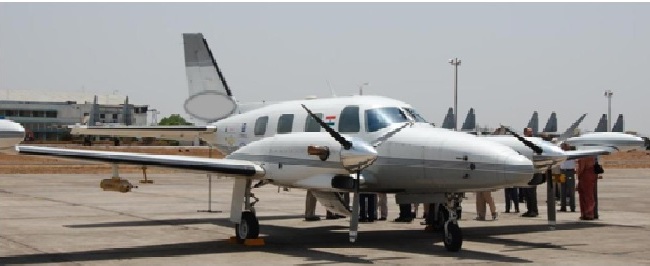
Daily Routine:
Generalized Daily Operation Routine
The daily routine was controlled, guided and monitored by the Operation Director, who was the senior scientists from the IITM / participating institutions. Summary of the daily operations is as follows.
- Operations started up with early monitoring of forecasting charts, soundings, overnight radar pictures, etc.
- Daily briefing including forecast, equipment status, scientific strategy for the day's operations, debrief on key issues of previous day operations, weekly recap on overall progress toward observational goals or quotas, etc.
- Expected sequence: 8.30 a.m. weather briefing, past operation's de-briefing equipment status, strategy for current day.
- Declaration of start or stop the operation: Operation Director, is deciding the operation, taking in to consideration the forecast information, equipment status, crew status and scientific needs.
- Designating a down day's to be done ~ 24 hours or more in advance, based upon forecast information, overall needs of the project, overall personnel needs for rest time.
- Providing documentation of daily key functions for archival : Forecaster to provide forecast materials for digital archive; Operation Director will supervise the maintenance of routine logs;
- Flight scientists maintained flight logs.
Flight strategies overview
Flight operations were undertaken to accomplish a range of observation needs including:
- Instrumentation tests and Intercomparison.
- Ambient aerosol research survey flights
- Cloud and aerosol research flights
Instrument Flight Tests: Instrument tests were carried out regularly
CAIPEEX Phase II (2010)
During the Phase II of CAIPEEX (during 2010-2011), airborne observations were conducted with Hyderabad as the base station and generally continental clouds were observed.
Phase II 2011
CAIPEEX 2011 also included an Integrated Ground Observational Campaign (IGOC), which has made ground to cloud layer observations possible, addressing the thermodynamical and microphysical aspects of convection over the lee side of Western Ghat.
Participants of Phase II
| 1. Dr. D. R. Sikka, 40, Mausam Vihar, New Delhi - 110 051 drsikka@yahoo.com |
12. Dr. C. B. S. Dutt |
|
2. Dr. Ajit Tyagi |
13. Dr. Vidyadhar Mudkavibr |
| 3. Dr. B.N Goswami Director, Indian Institute of Tropical Meteorology, Dr. Homi Bhabha Road, Pashan, Pune 411 008 91-020-25893924:Office 91-020-25885171 :Residence goswami@tropmet.res.in |
14. Dr. V. S. Prakash |
| 4. Dr. R. R. Kelkar ISRO Chair Professor Department of Atmospheric & Space Sciences, Univeristy of Pune Ganeshkhind, Pune - 411 007 rrkelkar@unipune.ernet.in |
15. Dr. S.H. Damle |
| 5. Prof. G. S. Bhat Chairman, Center for Atmospheric and Oceanic Sciences (CAOS) Indian Institute of Science (IISC), Bangalore - 560 012. bhat@caos.iisc.ernet.in Phone : 080 23600450 , 080-2293 3071 Fax: 091-80-23600865 |
16. Dr. S.N. A. Jaffrey, University of Udaipur, Associate Prof., M.L. Sukhadia University, Udaipur Sna_jaaffrey@yahoo.co.in |
|
6. Prof. P. V. Joseph |
17. Dr. A.B. Mazumdar, DDGM (Weather Forecasting), Pune abmazumdar@gmail.com |
|
7. Prof. M.M. Sarin |
18. Mr. V.K. Soni, MET Gr. I, sonivd@yahoo.com |
|
8. K. Krishnamoorthy |
19. Dr. G.B. Pant, Retd, Director,IITM, Pune gbpant@yahoo.com |
|
9. Dr. Rajeevan |
20. Dr. B. Vekateshwar Rao, Professor of Water Resources & Coordinator CEA & WMT, 3rd Floor,ECE building, JNT UNiversity, Kukatpally, Hyderabad 500072, Phone +91 -(0)40-3240 8785 / 32405311. Mobile: 9849585290 Fax 91-(0)-40-23053105. E-mail: water@ichwam.org or cwr_jntu@yahoo.com, "Coordinator cas" |
| 10. Dr. Swati Basu Advisor/Scientist-G, Ministry of Earth Sciences Block No. 12, Mahasagar Bhawan C.G.O. Complex, Lodhi Road 110003 swati.basu@nic.in, swatimes@gmail.com Tel : 011-24610746; Telefax: 24611560 |
21. Dr. John P. George, Scientist, NCMRWF, New Delhi john@ncmrwf.gov.in |
|
11. Dr. Pradeep Kumar |
22. Dr. S. Sreenivasan, TIFR Balloon Facility Committee and Balloon Facility Management Board, National centre for environmental sciences and payload engineering, Hyderabad - 500 062 vasanss@tifr.res.in |
Aircraft used in Phase II - First Year
CAIPEEX II utilized two aircraft during flight operations. The research aircraft was the South African Weather Services, Aerocommander 690A. A Thrush turboprop aircraft was utilized for seeding clouds during the project.
Aerocommander 690A
The Aerocommander 690A is a twin Turbo propeller aircraft. The aircraft was modified to accommodate atmospheric research instrumentation for aerosol and cloud measurements.
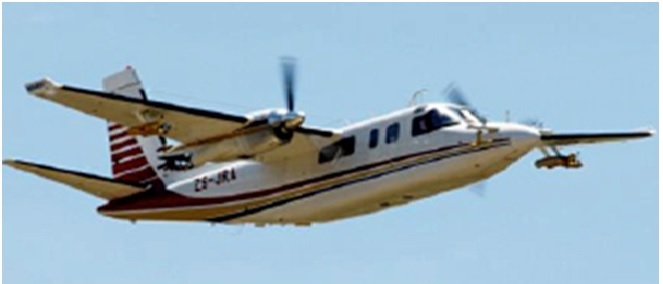
Seeder aircraft: Ayers Thrush
The Thrush was a standard crop spraying aircraft that was modified to carry twenty Burn-In-Place (BIP) hygroscopic and glaciogenic flares.
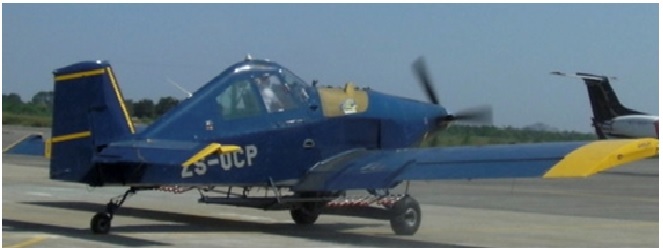
CAIPEEX Phase III (2014)
The Phase III 2014 of CAIPEEX started in May 2014 with a setup of ground based and airborne observations started on 9th Sept 2014. The aircraft observations together with the ground based observations were conducted during 2014. 49 Hours of airborne observations were conducted from Varanasi during the Phase III. Ground based observations were conducted from the rural campus of Banaras Hindu University. The Phase III also carried out several aerosol and precipitation chemistry measurements on board the aircraft such as Particle in Liquid Sampler (PILS), Photo Acoustic Extinctiometer (PAX) for black carbon measurements, Cavity Ring Down Spectrometer (CRDS) for CO2, CH4, CO and H2O.
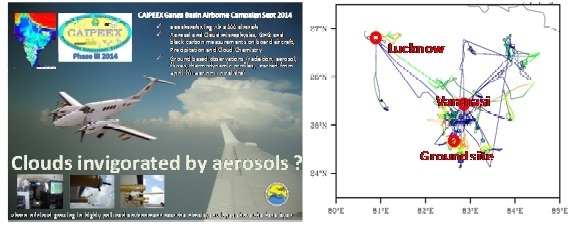
Phase III 2015
Aircraft observationswerecarried out from Kolhapur in the triangular area between Kolhapur, Mahabaleswar and Solapurin the month of July 2015 for 75 hours. These observations of cloud microphysics, aerosol, black carbon, chemistry and GHG are conducted with specific emphasis to understand the cloud characteristics in view of the planning for randomized seeding experiments for 2016-17. Several observations are conducted in collocation with HACPL and IITM radars at Mandradev. Vertical profiling of clouds in the rain shadow area, aerosol and cloud observations over Mahabaleswar and over the Arabian Sea was carried out. GHG and aerosol chemistry observations over these locations were done for the first time.
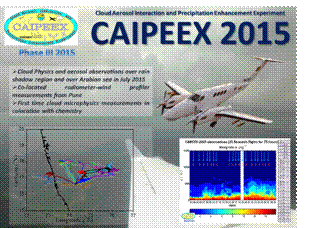
Winter Fog Campaign (2015)
Winter Fog Campaign 2015 at New Delhi Airport. The observational campaign was organized to understand the formation, dissipation and life cycle of fog.The microwave radiometer, wind profiler, tower instruments such as; all weather sensors, eddy covariance sensors, net radiometers, soil temperature and moisture sensors, aethalometer, fog collector, Cloud droplet probe, condensation particle counter are installed and are operational at the IGI airport. Filter samples are also regularly collected for chemical and physical analysis. Photo acoustic extinctiometer is installed at Pusa. Tethersonde flights are also undertaken.
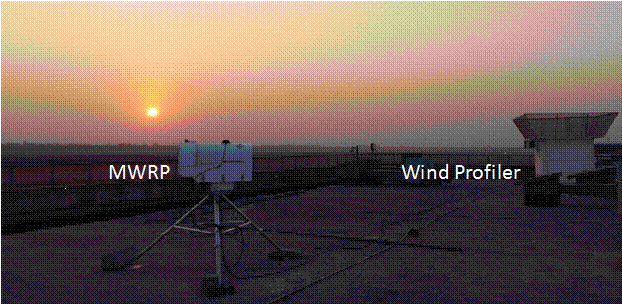
Team
Project: Physics and Dynamics of Tropical Clouds
Project Director: Dr.(Smt.) Thara Prabhakaran, Scientist-F,
Sub-project: Cloud Aerosol Interaction and Precipitation Enhancement (CAIPEEX)
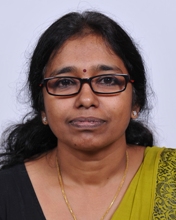
Scientist F & Project Director of CAIPEEX
Cloud Microphysics
thara[at]tropmet[dot]res[dot]in
Phone No - +91-(0)20-25904371
View profile
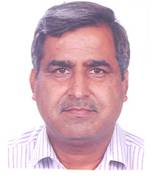
Scientist-F (Delhi Branch)
Air Pollution, Precipitation Chemistry
smbtiwari@tropmet.res.in
Phone No - +91-(0)20-28743976
View profile
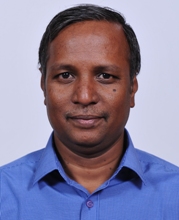
Scientist-F
Atmospheric Electricity
pmvelu[at]tropmet[dot]res[dot]in
Phone No - +91-(0)20-25904463
View profile
Scientist-E
Experimental and Numerical Fluid Dynamics
sadixit[at]tropmet[dot]res[dot]in
Phone No - +91-(0)20-25904242
View Profile
Scientist-E
Cloud and Rain microphysics
mkonwar[at]tropmet[dot]res[dot]in
Phone No - +91-(0)20-25904489
View Profile
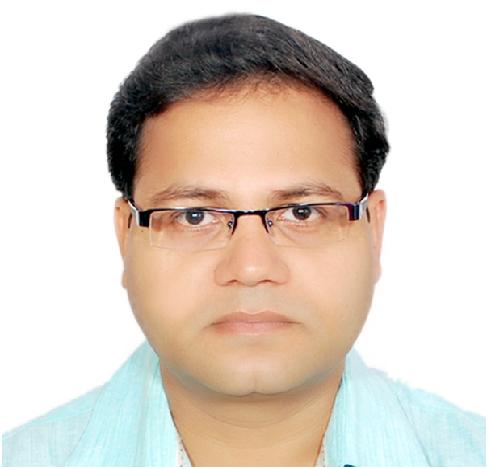
Scientist-E (Delhi Branch)
Atmospheric aerosols and their direct and indirect impacts
atul[at]tropmet[dot]res[dot]in
Phone No - +91-(0)20-25904457
View profile
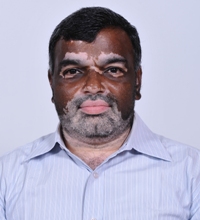
Scientist-D
Remote sensing of Tropical Troposphere
jrao[at]tropmet[dot]res[dot]in
Phone No - +91-(0)20-25904254
View profile
Scientist-D
Cloud Physics
sbera.cat[at]tropmet[dot]res[dot]in
Phone No - +91-(0)20-25904236
View Profile
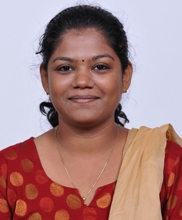
Scientist-D
Aerosol – Cloud Interaction
mercy[dot]cat[at]tropmet[dot]res[dot]in
Phone No - +91-(0)20-25904342
View Profile

Scientist-D
Data Assimilation System for ROMS ocean model
balaji.cat[at]tropmet[dot]res[dot]in
Phone No - +91-(0)20-25904353
View profile
Scientific-D (Delhi Branch)
Tropical cyclone modelling, Aerosol characteristics over Indo-Gangetic Basin.
vivek[dot]singh[at]tropmet[dot]res[dot]in
Phone No - +91-(0)20-25904519
View profile

Jr. Scientific Officer (Delhi Branch)
dsbisht[at]tropmet[dot]res[dot]in
Phone No - +91-(0)20-25904519
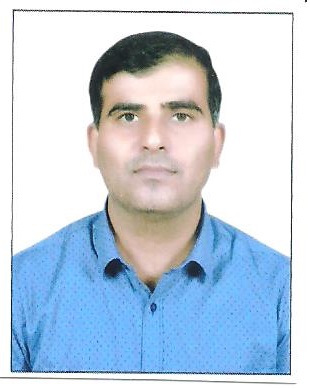
Senior Exercutive (Delhi Branch)
Admin work
jhakumarniraj[at]tropmet[dot]res[dot]in
Phone No - +91-(0)20-25904519

MTS
dsbisht[at]tropmet[dot]res[dot]in
Phone No - +91-(0)20-25904519
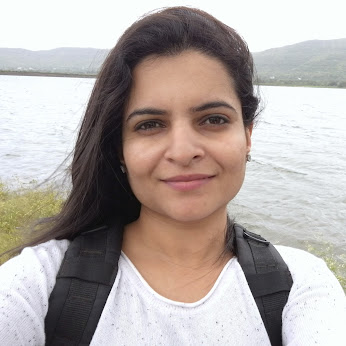
Project Scientist III
Aerosol Cloud Interaction, WRF bin
gayatri[at]tropmet[dot]res[dot]in
Phone No - +91-(0)20-25904345
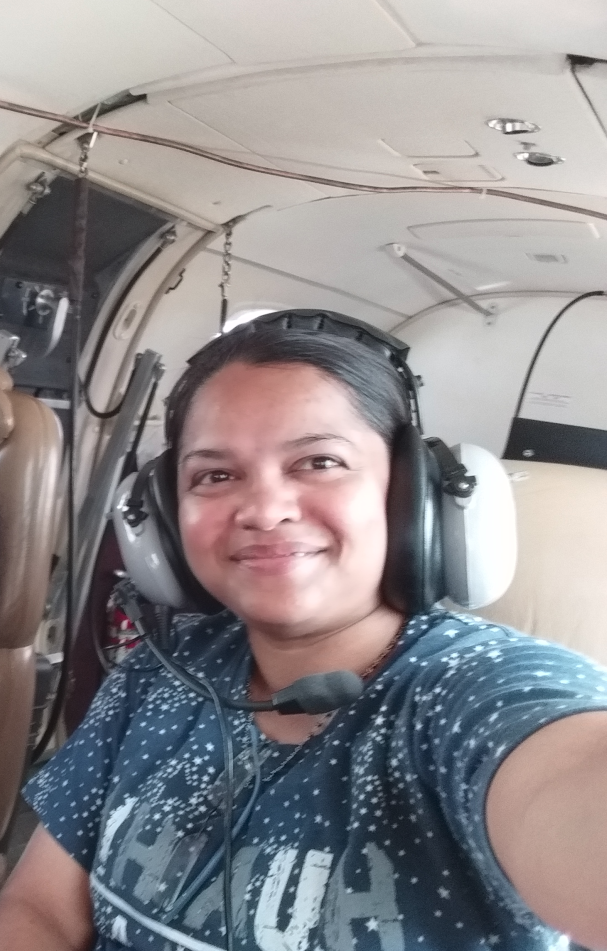
Project Scientist II
Shallow clouds, boundary layer, aerosols
neelammalap[at]gmail[dot]com
Phone No - +91-(0)20-25904345
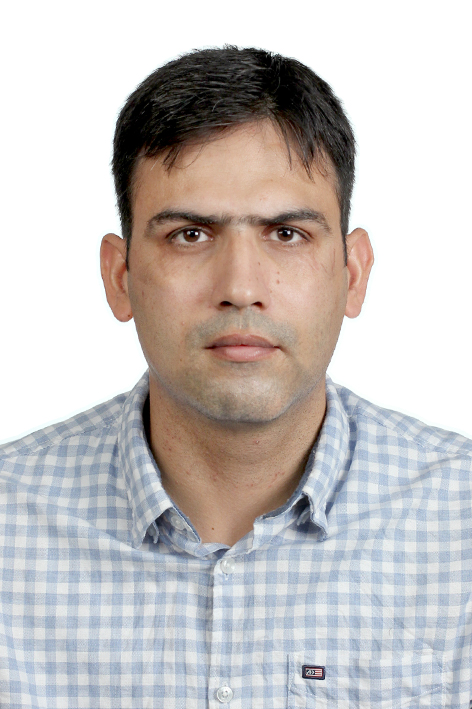
Project Scientist II
Atmospheric boundary layer characterization with remote sensing and tower based measurements.
raman[dot]solanki[at]tropmet[dot]res[dot]in
Phone No -
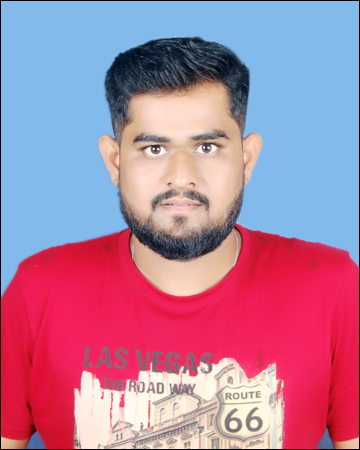
Project Scientist II
Instrumentation and observations , Atmospheric aerosol and chemistry
shivdas[dot]bankar[at]tropmet[dot]res[dot]in
Phone No -

Project Scientist II
Experimental and Numerical Fluid Dynamics
harish[dot]choudhary[at]tropmet[dot]res[dot]in
Phone No - +91-(0)20-25904446
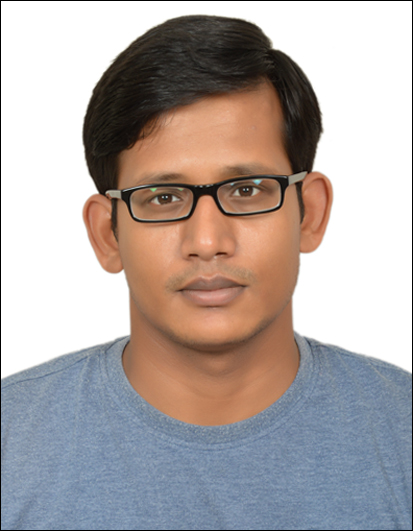
Project Scientist II
Radar Meteorology, WRF model, Cloud microphysics, Mesoscale Cloud Systems, Aerosol-Cloud interaction
soumya[dot]samanta[at]tropmet[dot]res[dot]in
Phone No - +91-(0)20-25904446

Project Scientist II
abhishek.gupta[at]tropmet[dot]res[dot]in
Phone No - +91-(0)20-25904242
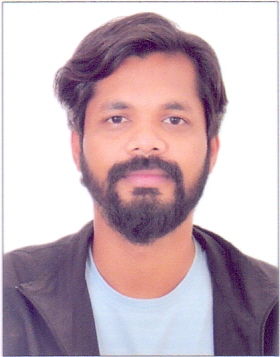
Project Scientist I
Atmospheric Aerosols Chemistry, Aerosol Optical and Radiative Forcing
pawan[dot]soyam[at]tropmet[dot]res[dot]in
Phone No -

Project Scientist I
RADAR Technology, Instrumentation and observation
mahendra[dot]mane[at]tropmet[dot]res[dot]in
Phone No -

Project Scientist I
Characterization of tropospheric aerosols and its long-term impacts, Atmospheric boundary layer and its thermodynamic characteristics
arvindhavel[at]tropmet[dot]res[dot]in
Phone No -

Project Scientist I
Atmospheric Chemistry; Carbonaceous Aerosols; Air Quality
ashish[dot]soni[at]tropmet[dot]res[dot]in
Phone No -

Project Assistant
Atmospheric Chemistry and Geology
sunil[dot]kondle[at]tropmet[dot]res[dot]in
Phone No -

Project Assistant
WRF Modelling, Regional Climate modelling, Extreme Weather Events
pravin[dot]punde[at]tropmet[dot]res[dot]in
Phone No - +91-(0)20-25904353

Project Assistant
Civil Engineering and FDL Instrumentation
prajyot[dot]sapkal[at]tropmet[dot]res[dot]in
Phone No - +91-(0)20-25904446
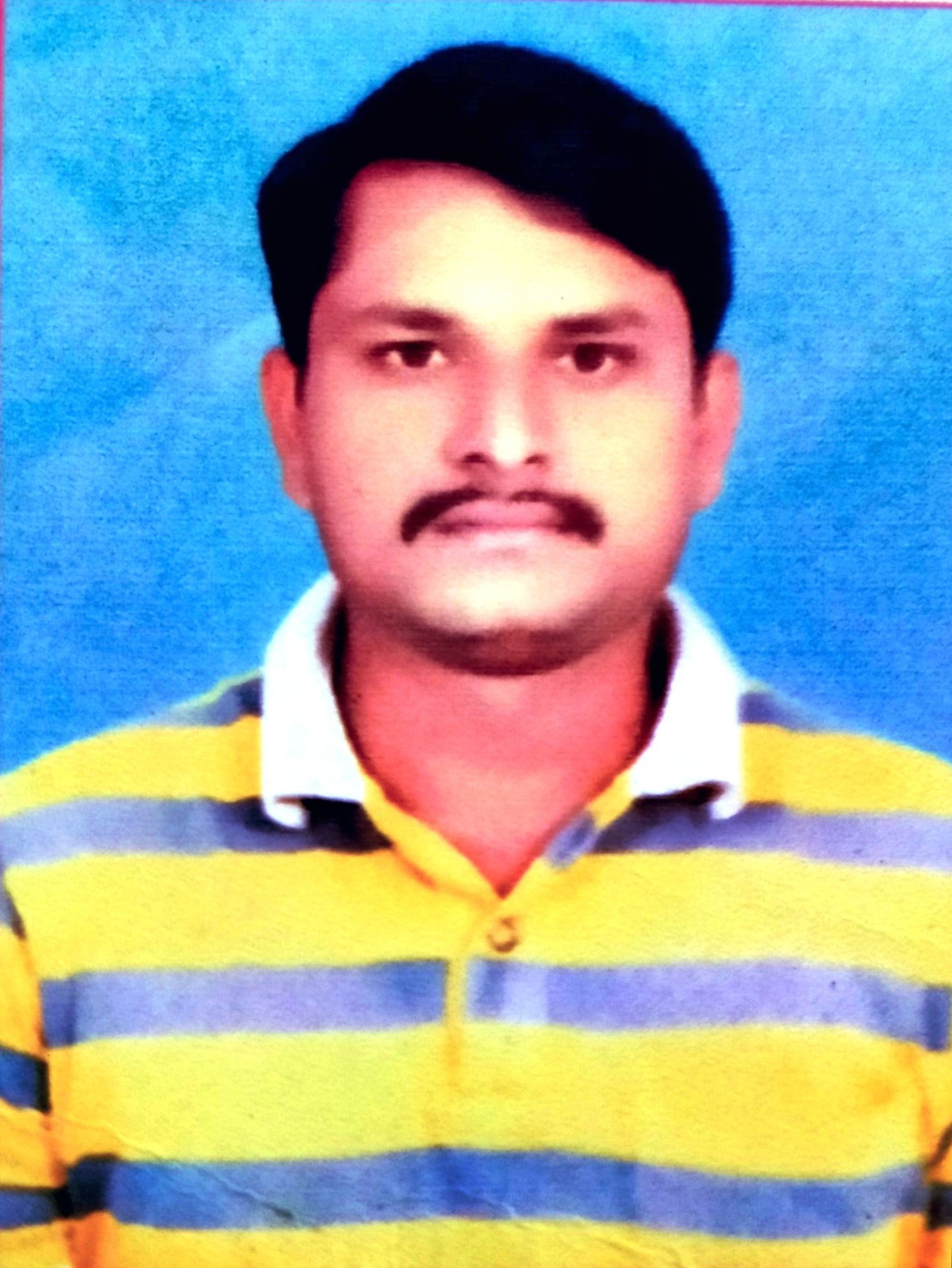
Sc. Admin. Asst.
Instrumentation
jyotiba[dot]pol[at]tropmet[dot]res[dot]in
Phone No -
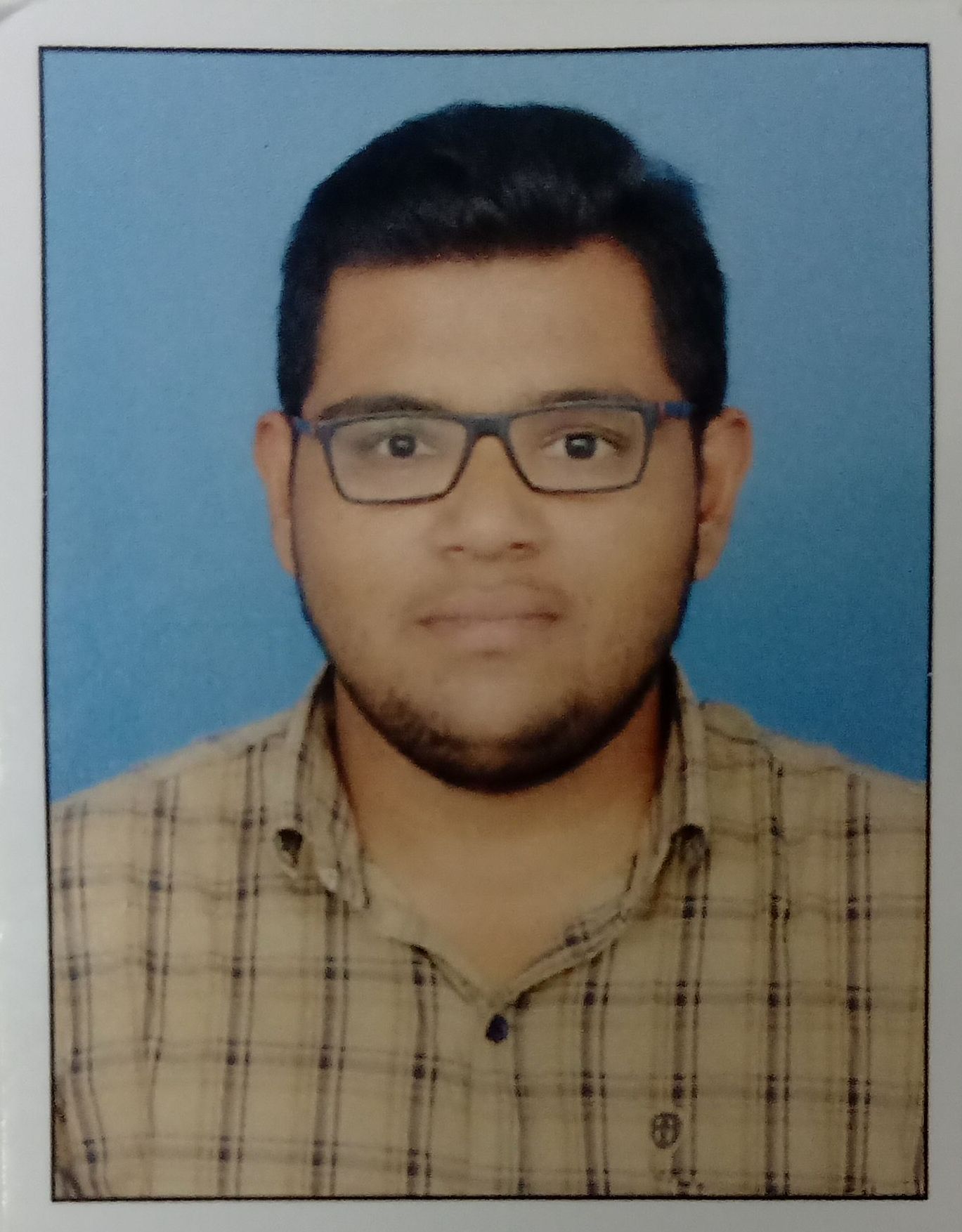
Sc. Admin. Asst.
Instrumentation
abhishek[dot]vyavhare[at]tropmet[dot]res[dot]in
Phone No -

Sc. Admin. Asst.
Atmospheric observation and instrumentation
pradeep[dot]zambare[at]tropmet[dot]res[dot]in
Phone No -

SRF
Cloud physics, WRF model, Python programming
sandeep[dot]j[at]tropmet[dot]res[dot]in
Phone No -

Lower Divisional Clerk
Admin work
pdtc[underscore]admin[at]tropmet[dot]res[dot]in
Phone No - +91-(0)20-25904353

